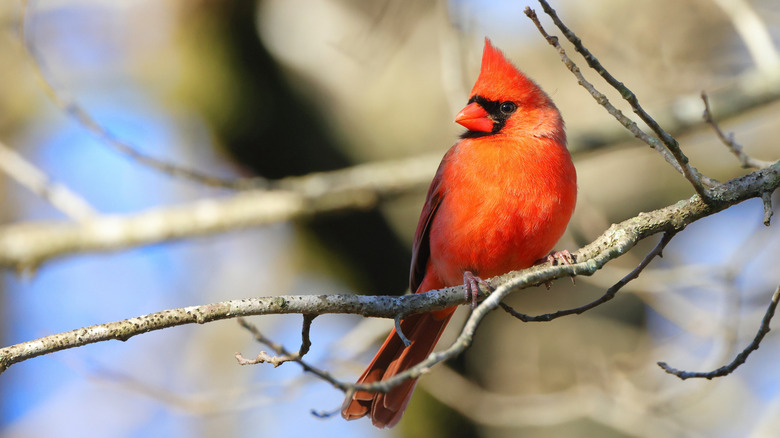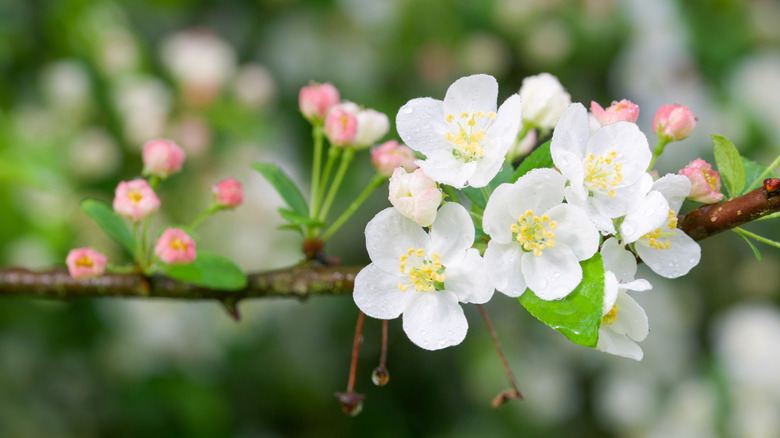The Cardinal-Loving Winter Tree With Plenty Of Color And Beautiful Spring Blooms
When trees start changing in early spring, many types of crabapples are among the first to start flowering. There are more than 1,000 known cultivars of these popular trees, and they all have slight variations in size and color. Furthermore, there are at least 20 types of crabapple trees you can grow in your own yard. One crabapple tree option to grow around a home is Sargent crabapple (Malus toringo). Not only is the size more appropriate for residential homes compared with other cultivars, but Sargent's crabapple is coveted for its pretty flowers as well as its fruit that cardinals love, making it the perfect winter tree.
Crabapple trees are revered for their ornamental qualities, and they can certainly make for show-stopping additions to home landscapes. Unlike other species that may grow up to 25 feet tall, Sargent crabapple is a smaller type of crabapple tree. It typically grows between 6 and 10 feet tall at a moderate growth rate. While perhaps best-known for its flowers that often emerge in May, Sargent crabapple also has beautiful coloring in the colder months thanks to their purple leaves that transform into a reddish-orange hue, or sometimes bright yellow.
Sargent crabapple has landscape and wildlife benefits
Sargent crabapple is best known for its pretty and fragrant pink to white-colored flowers that emerge during the spring. Before they do so, the trees also sport some striking pink or white buds that still add a bit of color around your landscape. Aside from its flowers and overall year-round aesthetic appeal, Sargent crabapple is also considered one of the types of trees for your yard that birds will love. This is all thanks to the tree's red fruit, which can support numerous types of wildlife throughout the winter. This benefit has been noted among cardinals, who are commonly seen around winter and are often looking for sources of food to survive these harsh months. The tree's fruit might also attract robins, foxes, and rabbits, as well as black bears and deer. Just be aware that deer can particularly become a nuisance once they've found this tree, as they are known to cause damage.
This flowering and fruiting tree is considered hardy in zones 4 to 8, and requires full sun along with well-draining soil. As long as they are not overshadowed by larger trees nearby, Sargent crabapple may be able to tolerate areas of partial shade. While Sargent crabapple is more resistant to diseases like scab than other species, it can still have issues with blight and leaf spot. These problems tend to be worse during seasons with above-average rainfall. The tree also needs plenty of room to grow, and you can expect it to be up to two times wider than it is tall.

